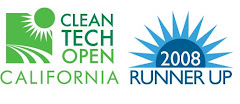"The next administration should commit to developing this extraordinary resource."
Geothermal Future
To most people the word “geothermal” means hot springs and geysers — like parts of Iceland or Yellowstone National Park where water is heated by the presence of magma near the surface of the earth. But the earth’s heat lies below everywhere, and it offers a virtually untapped energy reserve of enormous potential with a very short list of drawbacks.
In 2006, a panel led by the Massachusetts Institute of Technology surveyed the prospects for electricity production from enhanced geothermal systems. Its conclusions were conservative but very optimistic. The panel suggested that with modest federal support, geothermal power could play a critical role in America’s energy future, adding substantially to the nation’s store of renewable energy and more than making up for coal-burning power plants that would have to be retired.
Following up on the M.I.T. study and a separate survey of its own, the Bureau of Land Management issued a decision last month that would open up as many as 190 million acres to leases for geothermal exploration and development. These lands are mostly in the West, where hot rock lies closer to the surface than it generally does in the East.
There is a lot of research yet to be done about geothermal sources, new techniques for deep drilling and energy generation at the surface. But the basics are clear enough. Water is injected deep into the earth where it absorbs heat from the surrounding rock. As the fluid returns to the surface, that heat is used to generate electricity. The fluid is then re-injected. The system forms a closed loop. It creates almost no emissions and is entirely renewable. It also occupies a smaller surface area than either solar or wind power.
Read More





No comments:
Post a Comment